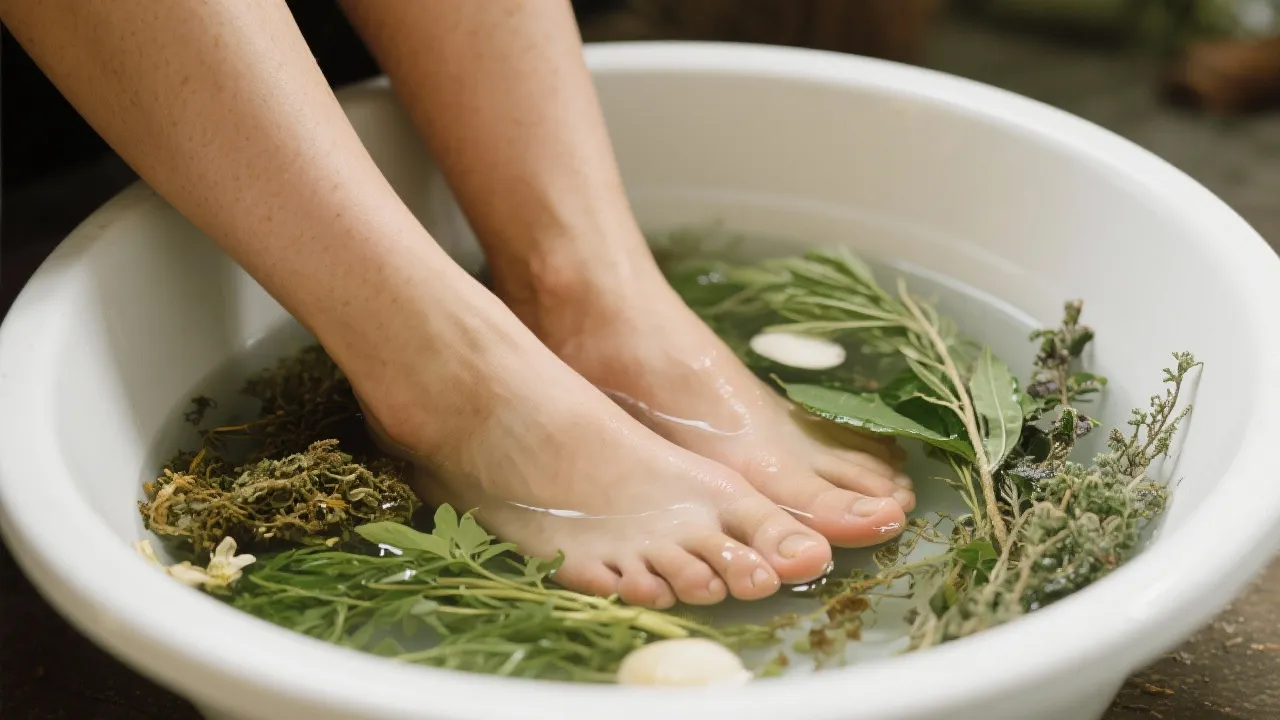Neuropathy Foot Bath Insights
Neuropathy foot baths are therapeutic treatments designed to alleviate symptoms associated with nerve damage in the feet and lower extremities. This alternative therapy involves soaking one's feet in warm water infused with minerals, essential oils, and sometimes medicinal herbs, aiming to enhance circulation, manage pain, and offer relaxation.

Understanding Neuropathy and its Symptoms
Neuropathy, or peripheral neuropathy, is a complex condition characterized by damage to the peripheral nerves, which are responsible for transmitting messages between the central nervous system (the brain and spinal cord) and the rest of the body. This damage can disrupt communication pathways, leading to a variety of symptoms that can significantly impact daily life. Common symptoms associated with neuropathy include tingling, burning, shooting pain, and numbness, predominantly affecting the feet and legs, although other parts of the body can also be involved.
The onset of neuropathy can occur for several reasons, including diabetes, infections, trauma, certain medications, and autoimmune diseases. For instance, diabetic neuropathy is one of the most prevalent forms and is caused by prolonged high blood sugar levels damaging the nerves. The symptoms can vary in severity, often leading to further complications if left unaddressed, such as difficulty walking or an increased risk of falls due to loss of balance or coordination.
In addition to physical symptoms, neuropathy can also promote feelings of anxiety and depression, as individuals may find themselves grappling with the chronic pain that often accompanies the condition. The emotional burden of neuropathy can make it even more challenging to manage everyday tasks, and thus understanding the condition is crucial for finding effective treatment and support options.
The Role of Neuropathy Foot Baths
As individuals and healthcare providers seek alternative therapies and adjunct treatments for neuropathy-related pain, neuropathy foot baths have gained increased attention. These baths revolve around soaking the feet in warm water, often augmented with various minerals, salts, and essential oils known for their soothing and healing properties. The primary aim of a neuropathy foot bath is to improve circulation, alleviate pain, and promote relaxation. The warm water helps enlarge blood vessels, improving blood flow to the feet and legs, which can help alleviate the sensation of numbness and tingling—common symptoms of neuropathy.
Beyond physical benefits, foot baths can also offer a therapeutic escape from the stresses of daily life. The ritualistic nature of taking a foot bath can provide a moment of mindfulness, allowing individuals to focus on the sensation of warmth and the soothing properties of the ingredients, thereby potentially enhancing mental well-being. Aromatherapy, derived from essential oils used in these treatments, can also elevate the overall experience, promoting relaxation and reducing anxiety.
Composition and Benefits
Typical neuropathy foot baths incorporate various nourishing and therapeutic ingredients, each selected for its specific benefits. Popular components include:
- Epsom Salt: Rich in magnesium, Epsom salt is famous for its ability to reduce inflammation and pain. It enters the skin to help relax the muscles, decrease swelling, and relieve discomfort. Many individuals report increased mobility after regular use of Epsom salt foot baths.
- Essential Oils: Common choices for essential oils include lavender, peppermint, and eucalyptus. Lavender oil is celebrated for its calming effects, which can help alleviate pain and create a sense of peace. Peppermint oil, with its cooling and invigorating properties, can provide instant relief from burning sensations and improve circulation. Eucalyptus oil is known for its analgesic properties and can help ease muscle tension.
- Herbal Infusions: Some foot baths utilize herbs like chamomile or ginkgo biloba to enhance relaxation and improve circulation. Chamomile is renowned for its anti-inflammatory and soothing properties. Ginkgo biloba is believed to enhance blood flow and potentially improve nerve function, making it an appealing option for those managing neuropathy.
- Other Additives: In addition to the aforementioned ingredients, some individuals may choose to add apple cider vinegar, which is known for its potential antifungal properties and ability to soothe skin irritations, or baking soda to help soften the skin.
The customization of ingredients allows individuals to tailor their foot baths to their sensory preferences and specific symptoms, making neuropathy foot baths both a versatile and effective adjunct treatment. Ultimately, the combination of warmth, gentle massage, and soothing elements can help reduce inflammation, relieve pain, and foster an overall sense of physical and emotional well-being.
How to Use a Neuropathy Foot Bath
To maximize the benefits of a neuropathy foot bath, following a structured approach can enhance the therapeutic experience. Here’s a detailed step-by-step guide on how to prepare and use a neuropathy foot bath:
- Preparation: Start by gathering all desired ingredients including Epsom salt, essential oils, herbal infusions, or any additional ingredients you wish to include. Having everything on hand before you begin will create a smooth and uninterrupted experience.
- Setting Up: Choose a comfortable spot and fill a sturdy basin or foot spa with warm water. The water temperature should be comfortable; typically, a range of 90°F to 105°F is recommended. Ensure it’s not too hot to avoid burns, especially if you have reduced sensitivity in your feet.
- Infusion: Add your chosen ingredients to the warm water. For Epsom salt, around 1 to 2 cups is generally recommended. If using essential oils, start with 5-10 drops, adjusting based on your personal preference. Mix well to ensure the ingredients are evenly distributed throughout the water.
- Soaking: Once everything is mixed thoroughly, immerse your feet into the bath. Aim to soak for 20-30 minutes to allow the ingredients to penetrate the skin effectively. During this time, feel free to utilize this moment for relaxation—listen to soothing music, meditate, or enjoy a calming beverage to enhance the experience.
- Post-Treatment: After soaking, dry your feet carefully with a soft towel, and consider applying a moisturizer to help lock in moisture. This is particularly important for individuals with neuropathy, as dry skin can lead to further complications.
Regular rituals, such as foot baths, can promote a sense of control and self-care in those living with neuropathy. It can be a beneficial way to incorporate soothing self-care into one's daily routine while also addressing the troublesome symptoms associated with nerve damage.
A Comparison: Traditional vs. Neuropathy Foot Baths
| Aspect | Traditional Foot Bath | Neuropathy Foot Bath |
|---|---|---|
| Purpose | General relaxation and hygiene | Treatment of neuropathy symptoms |
| Ingredients | Water, soap | Epsom salt, essential oils, herbs |
| Benefits | Cleanliness, basic relaxation | Pain relief, improved circulation, muscle relaxation |
| Experience | Primarily for hygiene and comfort | Holistic experience targeting nerve pain and tension relief |
| Specificity | General for all users | Tailored approach for individuals with neuropathy |
This comparison illustrates the enhanced specificity and therapeutic focus of neuropathy foot baths compared to traditional foot baths. While standard foot baths serve a basic hygiene and relaxation purpose, neuropathy foot baths target the specific pain alleviation and improved circulation needs of those suffering from nerve issues. Recognizing these differences can empower individuals dealing with neuropathy to make informed decisions on their self-care routines, optimizing their overall health.
Frequently Asked Questions
- Can anyone with neuropathy use the foot bath? - While generally safe for most individuals, it's important for those with neuropathy or any underlying health conditions to consult a healthcare provider before starting any new treatment. This is especially crucial if open wounds or severe nerve damage are present, as the soaking process may exacerbate certain conditions.
- How often should one use a neuropathy foot bath? - It is typically recommended to use the bath 2-3 times weekly. However, this frequently may vary based on individual comfort levels and overall health status. Consulting a healthcare professional can provide more personalized advice tailored to specific needs.
- Are there any side effects? - Generally, neuropathy foot baths are safe, with side effects being mild and rare. Some individuals may experience skin irritation, particularly if they have sensitive skin or if certain essential oils are utilized without adequate dilution. Conducting a patch test for any new ingredient is always advisable to ensure no adverse reaction occurs.
- Can I personalize my neuropathy foot bath? - Absolutely! Personalization is one of the key advantages of a neuropathy foot bath. You can experiment with different combinations of Epsom salts, essential oils, and herbal infusions to determine what works best for your body and provides the most comfort and pain relief.
- Can neuropathy foot baths help diabetes-related neuropathy? - Many individuals with diabetes-related neuropathy report positive effects when incorporating neuropathy foot baths into their self-care routines. The improved circulation and reduction of tension can help alleviate some symptoms associated with diabetic neuropathy. Always consult with a healthcare professional to ensure the approach fits into your overall diabetes management plan.
- Should I get a foot spa or use a basin? - The choice depends on personal preference. A foot spa may provide a more luxurious experience with features such as heat and bubble massage, while a simple basin can be more practical and cost-effective. Both methods can be beneficial for neuropathy foot baths.
- Is there an optimal time to take a foot bath? - Many find incorporating foot baths in the evening beneficial, as it can promote relaxation and help unwind before bedtime. However, it is essential to adapt the timing according to personal schedules and preferences.
Conclusion
Integrating neuropathy foot baths as part of a self-care regimen can offer relief to those battling neuropathy. The combination of heat therapy, relaxation, and therapeutic ingredients has the potential to improve quality of life significantly. The baths present a non-invasive solution that can help mitigate symptoms like pain and discomfort while concurrently enhancing emotional well-being through the calming effects of essential oils and warm water.
While neuropathy foot baths can greatly benefit many individuals, it is essential to approach this treatment as part of a broader self-care and management strategy for neuropathy. Consulting healthcare professionals can help tailor the treatment to specific needs, provide expert guidance, and ensure the safe application of foot baths alongside any prescribed treatments or medications. With the right combination of self-care strategies and professional advice, individuals can find ways to manage their neuropathy, fostering a better quality of life.
Moreover, as ongoing research uncovers more about neuropathy and its effects on individuals, alternative therapies such as neuropathy foot baths can continue to evolve, offering hope and healing to those affected. Sharing personal experiences with others dealing with neuropathy can foster a community of support, education, and empowerment—an essential step in navigating life with this challenging condition.





